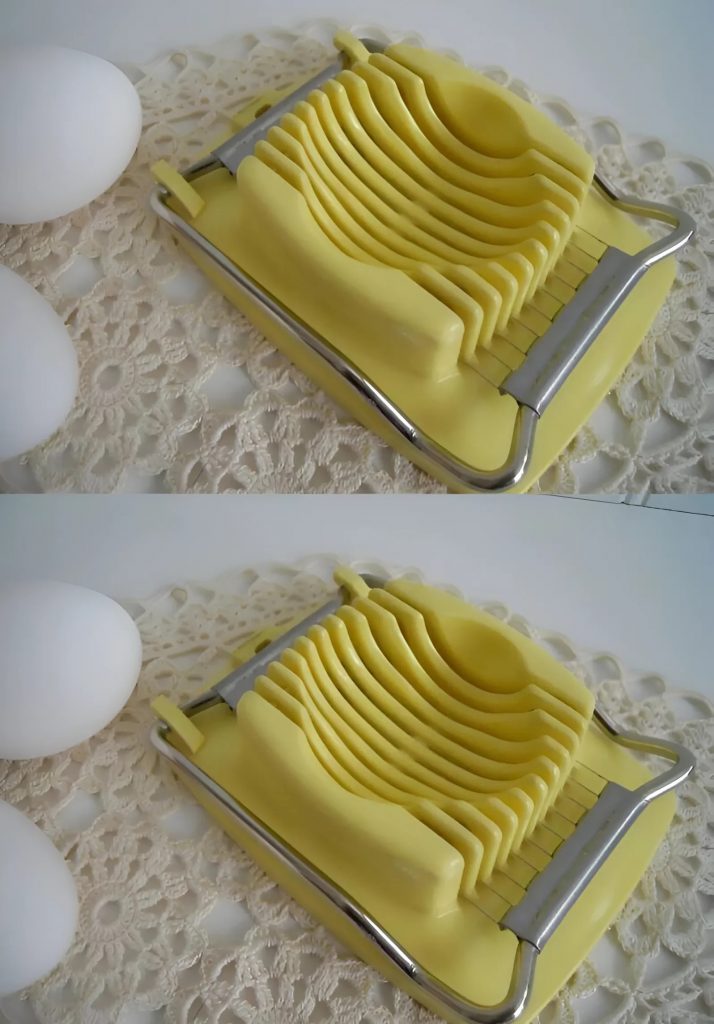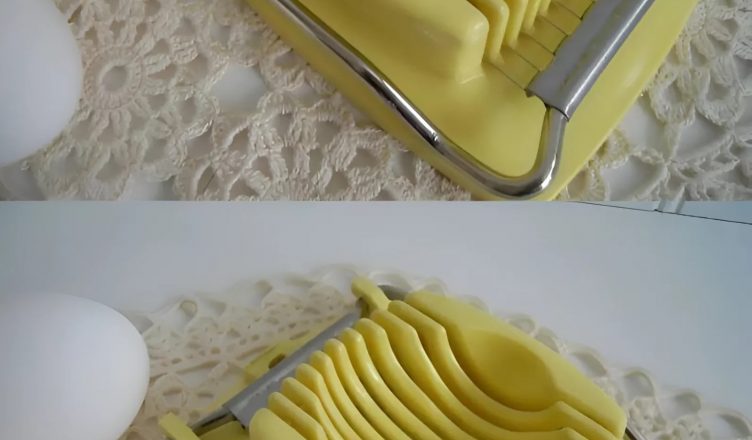In a world dominated by high-tech appliances and AI-powered cooking assistants, it’s easy to forget that some of the most brilliant innovations are the simplest. They don’t beep, they don’t require an app, and they don’t occupy half your counter space. But once upon a time, they transformed the way we prepared and presented food.
One such object, now largely forgotten by younger generations, is the hard-boiled egg slicer — a small, humble kitchen tool that quietly revolutionized home cooking in the early 20th century.
It may seem laughably trivial today, but back then, this tool was a symbol of practicality, elegance, and the pursuit of culinary perfection.
The Art of Presentation in the Early 1900s
In the early decades of the 20th century, home kitchens began to evolve. No longer just spaces for function and necessity, they became the domains of pride and hospitality. Particularly in middle-class European households, there was a growing emphasis on food presentation.
Hard-boiled eggs were a staple — served in salads, on sandwiches, or as garnishes. But slicing them neatly was a delicate task. The yolk crumbled, the white tore, and the results often looked far from appetizing.
Enter the egg slicer: a sleek tool consisting of thin, tightly stretched wires across a hinged metal or plastic frame. With one quick press, the egg was sliced into perfectly even, clean rounds — no fuss, no mess, no jagged edges.
It was the kind of innovation that made people wonder how they had lived without it.
A Small Tool with Big Impact
Invented in Germany in the early 1900s, the egg slicer quickly became a favorite in European households. It was cheap, efficient, and — most importantly — it saved time while elevating the visual appeal of food.
What made it so popular?
Precision: Every slice was the same thickness, making dishes look more refined.
Speed: What took minutes with a knife now took seconds.
Ease: No special skills required — a child could use it.
Versatility: Though designed for eggs, it soon found new life slicing strawberries, mushrooms, even soft cheeses.

For housewives striving for perfection, this small device was a godsend. For hosts wanting to impress their guests, it was a quiet weapon in the culinary arsenal.
Decline and Disappearance
By the 1970s and ’80s, as food processors and multifunctional blenders entered the scene, tools like the egg slicer lost their spotlight. People moved toward speed and automation, and the careful aesthetics of food prep became secondary to convenience.
The egg slicer was relegated to the back of drawers, or tossed out altogether.
But not everywhere.
In some households, especially those where traditions ran deep, the slicer remained — passed down like a family heirloom. And in professional kitchens, where detail still mattered, the tool found a quiet niche.
A Surprising Comeback in the Age of Instagram
Fast forward to the 2020s. A new generation, obsessed with aesthetics, “foodie” culture, and homemade everything, begins to rediscover the magic of analog tools.
Suddenly, TikTok videos showcasing perfectly sliced eggs go viral. Lifestyle bloggers tout the “retro charm” of traditional kitchen gadgets. And, in a world overwhelmed by smart devices, something as simple and satisfying as an egg slicer starts to feel revolutionary again.
Modern versions appear in stores — updated with colorful plastics and ergonomic grips, but still based on the century-old design.
A Deeper Lesson from a Forgotten Tool
So why does this matter?
Because the egg slicer represents something we’re starting to remember: that beauty in the everyday is worth the effort, and that sometimes, the most meaningful tools are the simplest.
It’s not just about slicing an egg. It’s about care. About attention to detail. About finding joy in small rituals.
This humble kitchen gadget reminds us that cooking — real cooking — isn’t just about fuel. It’s about experience. Memory. Texture. Balance.
And perhaps, in a world rushing faster every day, we could all benefit from slowing down just enough to appreciate the elegance of a perfect slice.
So if you happen to come across one of these in your grandmother’s drawer, don’t toss it. Use it. Celebrate it. Let it remind you of the quiet brilliance of generations past — and the lasting value of simplicity.
